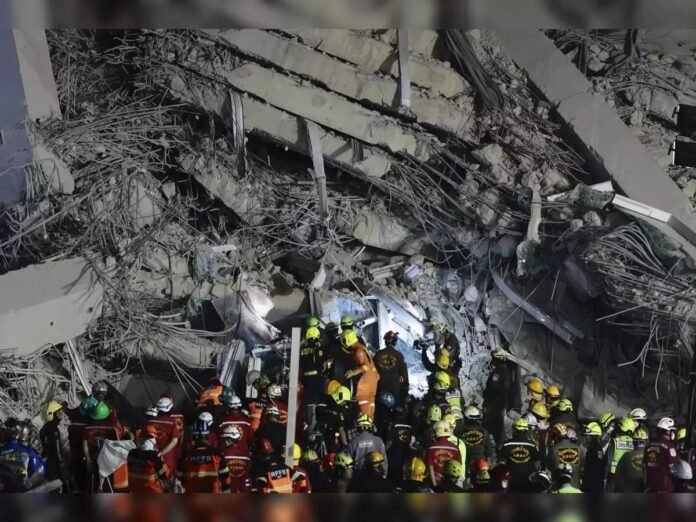Mandalay, Myanmar – On Sunday, March 30, a 5.1-magnitude earthquake struck in the vicinity of Mandalay, unsettling central Myanmar and adding to concerns in a region that had recently experienced a strong 7.7-magnitude quake. The most recent quake was labeled as part of a series of aftershocks, which kept disaster response officials and local authorities on high alert.Today’s Earthquake: Panic and PrecautionsThe quake was shallow and located about 30 kilometers northeast of Mandalay, Myanmar’s second-largest city. Initial reports indicate that buildings shook, and locals ran out into the street in a panic out of fear of buildings collapsing. Reports of injuries or significant structural damage are not yet available; however, there have been reports of cracks in a couple of older buildings.“We experienced powerful shaking for almost 10 seconds,” recounted Aung Kyaw, a Mandalay resident. “Since the quake a few days ago, life in Mandalay is fearful. I don’t know if this is the last one or if more will come.” The Myanmar Earthquake Committee has still advised people to be cautious because aftershocks could continue for the next few days. Seismologists suggest that today’s tremor is likely related to the earlier 7.7 magnitude quake, which occurred on March 28, 2025, and caused some structural damage. Recalling the 7.7 Magnitude Earthquake: Widespread ImpactThe 7.7 magnitude earthquake that we earlier reported on has had lasting aftereffects on those in the region. The largest earthquake to strike Myanmar in recent years was felt across a wide region, reaching parts of Thailand and areas of Bangladesh. The quake’s epicenter was in a remote location, but tremors were strong enough to inflict damage to various infrastructure, including roads and bridges, in area towns. Over 1,700 died, more than 3,400 were injured, 139 were reported missing, and several homes collapsed, leaving families without shelter. Although rescue teams were able to reach earthquake-affected areas, the remoteness of some villages and the destruction of several village routes made rescue efforts more difficult. Reach into communities affected by this disaster was further limited by landslides in hilly areas.Why Are There More Earthquakes in Myanmar? Myanmar is situated along the seismically active Sagaing Fault, a major tectonic boundary that runs north to south through the country. This fault has caused several notable earthquakes, including the deadly 6.8 magnitude earthquake that killed dozens in 2012.Researchers warn that the region is still at risk for earthquake activity. “Aftershocks can continue for weeks, sometimes even months, after a major earthquake,” stated Dr. Hla Myo, a geologist working in Yangon. “Residents in at-risk areas should be cautious about potential tremors and observe all safety measures.” Recent Updates and the Government’s TakeFor the moment, local authorities are assessing the damage caused by today’s earthquake, and schools, hospitals, and houses are a priority to check structural integrity. The government has also developed temporary shelters in the event of more disruptions.Meanwhile, aid organizations are mobilizing to respond to assist those impacted by the magnitude-7.1 earthquake earlier in the week. Food, water, and medicines were distributed. The Myanmar Red Cross is advising people to stay informed through official sources and to not interact with rumor.What Happens Now?Aftershocks are still happening, and the situation is still unpredictable. Residents are encouraged to: Maintain preparedness in the wake of a disaster with emergency kits. Continue to avoid residing in structurally deficient buildings. Continue to monitor reliable sources of information. Rebuilding affected communities and ensuring public safety continue to be the top priorities as Myanmar prepares for possible aftershocks. People in Mandalay and the surrounding areas are currently waiting impatiently, hoping that the ground beneath them will soon settle.
By Anusmita Bhatta
Reporting for True To Life News Media Pvt. Ltd.
